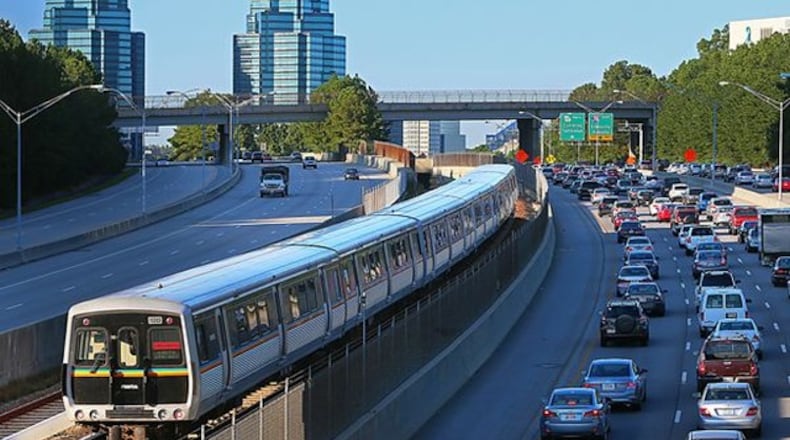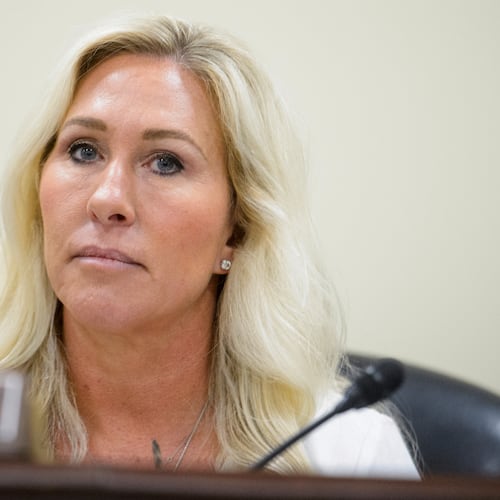A new government agency is poised to adopt a metro Atlanta transit plan that advocates say could transform commuting in a region long addicted to automobiles.
The plan — up for approval next month — is packed with $27.4 billion worth of new transit lines and other expenses sought by local governments. They range from the $1.9 billion Clifton Corridor rail line in Atlanta to a modest $45,000 request for staff vehicles for Douglas County's fledgling transit service.
For now, it's more of a wish list than a detailed construction timetable. Most of the 192 projects aren't paid for, and inclusion in the plan is no guarantee a project will be built.
But the plan is a prerequisite for state funding long sought by transit advocates. And in the long run it could help fashion a more seamless transit system for a region served by an alphabet soup of agencies with their own schedules, websites and methods of payment.
"We will be able to identify gaps in the transit investments that are being developed for this region," said Chris Tomlinson, the executive director of the Atlanta-Region Transit Link Authority, which is developing the plan. "Are there gaps where there's unmet needs, or are there gaps because it's not needed? We'll now have a bird's-eye view."
Last year, the General Assembly created the authority — dubbed the ATL Board for short — to oversee transit planning and funding in a 13-county area. It was a dramatic change of heart for a Legislature long skeptical of the value of mass transit.
To underscore the new attitude, lawmakers approved then-Gov. Nathan Deal's proposal for $100 million in state funding for bus rapid-transit facilities on Ga. 400 in Fulton County. And lawmakers indicated there could be more where that came from, giving the ATL Board the authority to recommend projects for state funding once its transit plan is in place.
The board has spent much of this year laying the groundwork for the plan — approving criteria for selecting projects for funding in May and soliciting projects to be included in the initial plan.
The tentative list — unveiled in September — includes high-profile rail projects such as the Clifton Corridor, the Atlanta Beltline, a MARTA extension to Gwinnett County and a commuter rail line to Clayton County.
It also includes a slew of bus rapid-transit lines across the region, plus MARTA station renovations, new transit centers and other enhancements.
The projects are in various stages of development and funding. For example, earlier this year MARTA approved a timetable to spend the proceeds of a half-cent transit sales tax approved by Atlanta voters in 2016. That includes plans for its share of the Clifton Corridor and numerous other projects.
But Gwinnett voters this year rejected a sales tax to pay for transit expansion. And DeKalb County must still finalize its transit expansion plans and how to pay for them.
Transit advocates are glad to see some of their favorite projects included in the ATL Board's plan. But they still have obstacles to overcome. For example, south DeKalb residents are lobbying the county and MARTA to pay for rail service along I-20 east to Stonecrest.
“Our first goal was to get rail in the plan,” south DeKalb resident Gina Mangham said. “We’ve managed to do that. But, of course, funding is always an issue.”
Likewise, Atlanta Beltline supporters hope the ATL Board will speed up their project, which won't be completed for decades under MARTA's timeline.
“I hope that the ATL Board has a powerful and positive influence and a big purse to go with it,” said Matthew Rao of the group Beltline Rail Now. “We don’t know if that’s going to happen yet.”
Transit skeptics also don’t know what to make of the ATL Board. Fayette is the only county that has no projects in the board’s plan — and County Commission Chairman Randy Ognio said it doesn’t want any.
“I don’t want to see them try to force anything on us,” Ognio said.
Tomlinson said that won’t happen. He said local governments must pitch in money for transit projects, so they’ll have to decide how (and whether) the money gets spent.
But over time he thinks the ATL Board can help create a more coherent regional transit system. One example: The board and several local agencies are applying for a federal grant to develop an app to help customers plan and pay for trips across county lines.
The ATL Board also may coordinate standards for bus rapid transit — a catchall term for various kinds of enhanced bus service that are found elsewhere in the country but not yet in metro Atlanta. Several local jurisdictions are planning such service, and Tomlinson wants to create a common experience for riders.
“Ideally it will be exactly the same or so similar that you don’t have to think about what the differences are” across local jurisdictions, he said.
Such work may continue for years. And Tomlinson said the plan will develop over time, with new projects added each year.
In the meantime, the ATL Board will meet Thursday to discuss the initial plan. Final adoption is expected in December.
Regional transit plan
A tentative regional transit plan includes 192 projects or improvements. Here are the five biggest projects, all of which would be operated by MARTA:
Clifton Corridor light rail Phase 1: $1.9 billion
I-20 east heavy rail to Stonecrest: $1.5 billion
MARTA extension to Norcross: $1.4 billion
Candler Road light rail: $1.1 billion
Clifton Corridor light rail Segment 2: $1.1 billion
SOURCE: Atlanta-Region Transit Link Authority
About the Author
Keep Reading
The Latest
Featured




